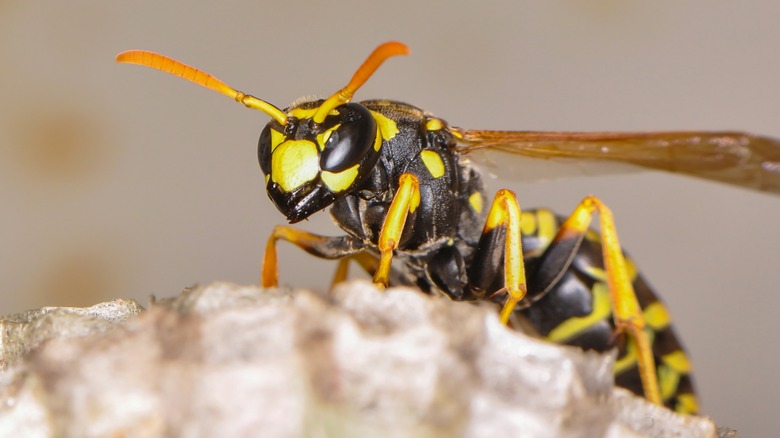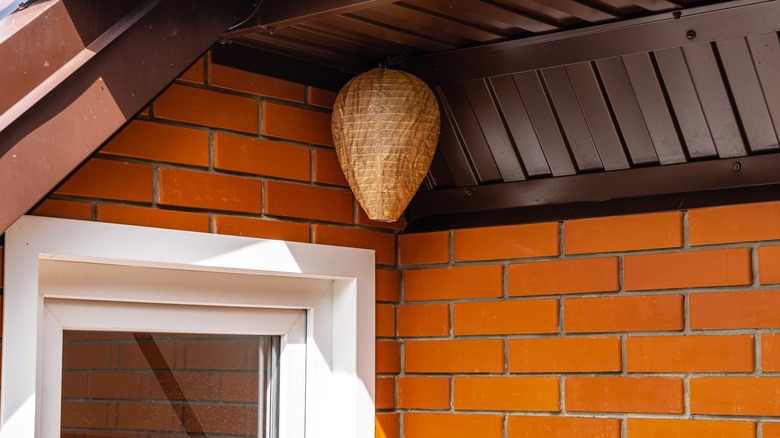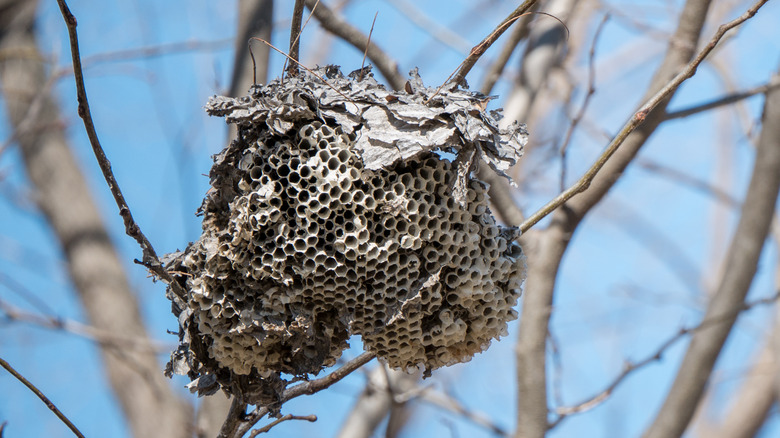The Nest You'll Need In Your Garden To Keep Wasps Out All Summer Long
Wasps are the uninvited party guests that absolutely no one wants around. You may have to use an assortment of chemical sprays and traps, or even resort to hiring an exterminator to remove a nest. Luckily, fake wasps nests might be the solution. By mimicking the appearance of paper wasp nests, fake nests encourage wasps to seek out other areas for colony building. That means you're able to enjoy your outdoor space without fear of accidentally annoying anything that's looking for food or feels threatened.
These imitation nests don't directly repel wasps, but instead deter them by taking advantage of their territorial instincts. However, it's important to keep in mind that this method of wasp deterrent is only applicable to certain species, which are referred to as paper nest-building wasps. This umbrella term covers yellow wasps, paper wasps, and hornets, to name the more common classifications.
As the name suggests, their unique nest creation looks somewhat like paper. These wasps gather wood fiber from plants and chew it to create paper-like material. These brightly colored critters then fashion this material into hexagonal cells, which are assembled to form their distinctive nest shape.
When and where to hang your nest
When installing fake wasp nests, timing and placement are important. You'll want to hang them in the springtime before the weather gets warm for them to have any effect. All but the mated queen wasps will die during the colder months, so if you hang a faux wasp nest before she wakes up from her seasonal hibernation, you may be able to prevent her from establishing a colony on your property.
It's also important to note that during the warmer seasons, worker wasps collect other insects as their protein source for the colony's budding babies. So don't remove the fake nest too soon, because late summer and fall tend to see increased wasp activity. This is when worker wasps search for sugary foods before they die off in winter.
You'll want to strategically place your fake wasp nest in areas where these flying warriors normally tend to congregate. You should also take into consideration the areas of your yard that you wish to keep wasp-free. You might want to hang one in the eaves of your patio, near a swing set, on a tree, under building overhangs, or in the vicinity of an older nest, should you happen to find one.
Other tips to help deter wasps
While the faux nest is an eco-friendly wasp deterrent, there are other natural ways you can discourage wasps from establishing a colony near your home. For instance, wasps won't build a nest within a hundred feet or so of another colony, so you'll want to use that to your advantage. If you happen to find an old and discarded nest, leave it be. Wasps die off every year and their nests won't be reused the following season. It's also thought that other colonies won't build near competing nests.
In addition to the 'leave it be' approach, different scents are thought to ward off these brightly colored flying fighters. Spearmint and mint, lemongrass, citronella, eucalyptus, clove, thyme, and geranium are all thought to be natural wasp deterrents. Around your home, be sure to seal possible entry points. If you're outside, try to steer clear of wearing bright colors or floral patterns, and don't wear any strong-smelling perfume.
Remember to pick up food scraps and keep your trash cans closed. Wasps are constantly on the prowl for proteins and simple sugars, so eliminating any potential food source can help keep any sort of bug (or critter) infestation at bay. Lastly, never ever swat at a wasp should it come to check out. You'll only upset it, which means you're putting it on defense.


